Vibrating water pipes can be a common yet frustrating issue in many households. These vibrations often result in noise, which can be disruptive, and in some cases, they may indicate underlying problems with your plumbing system.
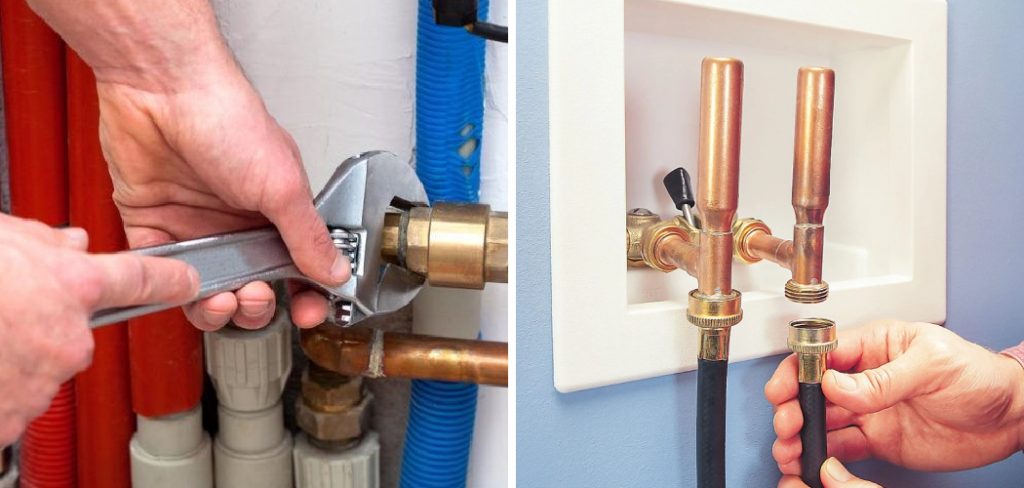
Understanding the causes of pipe vibrations and knowing how to address them can help prevent potential damage and restore peace to your home. This guide will provide practical steps of how to fix vibrating water pipes.
What Causes Vibrating Water Pipes?
Vibrating water pipes can be caused by several factors, each requiring its own solution. One of the most common causes is water hammer, which occurs when water flow is suddenly stopped or redirected, creating a shockwave that causes the pipes to rattle. Another potential reason is high water pressure; when the pressure in your plumbing system is too high, it can cause the pipes to vibrate during water flow.
Loose or improperly secured pipes are also a frequent culprit, as they may shake against surrounding materials when water moves through them. Additionally, faulty or worn-out components, such as washers or valves, can contribute to vibrations, producing noise and potential system inefficiencies. Identifying the root cause is essential for implementing an effective fix.
Tools and Materials Needed
To address plumbing vibrations effectively, you will need the following tools and materials:
- Pipe Wrenches – For tightening loose fittings and securing connections.
- Pipe Straps or Clamps – To secure pipes firmly against walls or other surfaces and prevent movement.
- Rubber Washers or Gaskets – To replace worn or faulty ones that may be causing noise or leaks.
- Thread Seal Tape – To ensure tight, leak-proof connections when reinstalling components.
- Adjustable Wrench – For versatile use on various pipe sizes and fittings.
- Plumber’s Tape – Useful for sealing and securing threaded joints effectively.
- Flashlight – For inspecting hard-to-reach areas and identifying problem spots.
Having these tools and materials on hand will help ensure a smoother repair process and reduce the likelihood of recurring issues.
10 Methods How to Fix Vibrating Water Pipes
1. Secure Loose Pipes with Proper Supports
A frequent cause of vibrating water pipes is that they are not firmly secured. Over time, pipe supports such as clamps, brackets, or straps may loosen or degrade, allowing pipes to move and vibrate when water flows through them. The simplest and often most effective method to fix this is by inspecting all visible pipes for any movement or looseness.
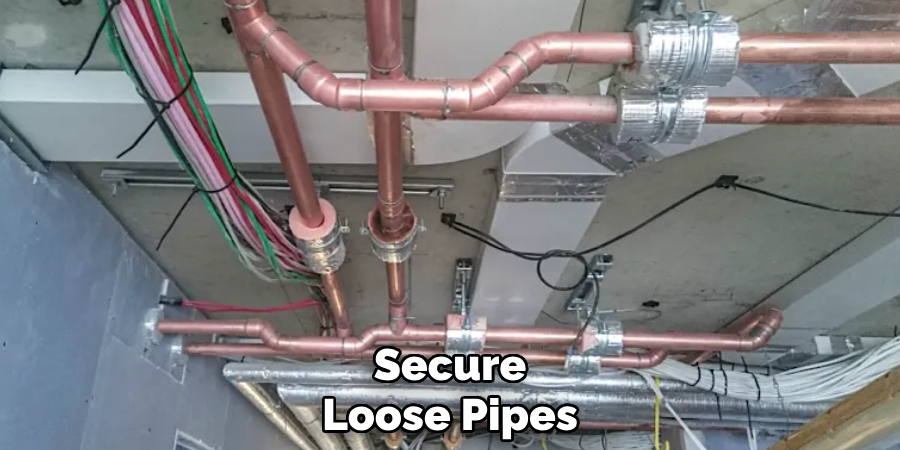
Adding extra pipe clamps or replacing old ones with cushioned or rubber-lined clamps can significantly reduce vibrations. The rubber lining helps absorb shock and prevents the metal from transmitting noise to the building’s structure. Ensuring that pipes are spaced adequately with supports placed every few feet, particularly around bends and joints, helps maintain stability and quiet operation.
2. Install Water Hammer Arrestors
Water hammer is a hydraulic shock phenomenon that happens when a valve or faucet shuts abruptly, causing a sudden stoppage of water flow and resulting in a loud banging or vibrating noise in the pipes. This can damage plumbing over time and is a common cause of pipe vibration.
To address this, install water hammer arrestors near appliances or fixtures prone to sudden water stoppage, such as washing machines, dishwashers, or toilets. Water hammer arrestors are designed to absorb the shock waves created by the sudden pressure change, preventing the vibrations from traveling through the pipes. These devices come in various forms, including air chambers or spring-loaded models, and their installation often requires minimal plumbing modifications.
3. Reduce Excessively High Water Pressure
High water pressure causes water to move rapidly through pipes, creating turbulence that leads to vibrations and noisy pipes. Many homes have water pressure that exceeds the recommended 40-60 psi range, especially if they rely directly on municipal water systems.
To check your water pressure, use a pressure gauge attached to an outdoor faucet or hose bib. If the pressure is too high, installing a pressure reducing valve (PRV) near the main water line is an excellent solution. A PRV regulates and maintains safe pressure levels, reducing the velocity of water flow through the pipes, which diminishes turbulence and vibration. In addition to reducing noise, lowering water pressure can also extend the lifespan of your plumbing fixtures.
4. Wrap Pipes with Insulation to Damp Vibrations
Pipes that come into direct contact with framing, walls, or floors can transmit vibrations and amplify noise within your home. Wrapping these pipes with foam or rubber insulation is a straightforward and effective method to absorb sound and reduce vibrations. Insulation acts as a cushion between the pipe and surrounding surfaces, dampening the movement and preventing the transmission of noise.
It also helps protect pipes from temperature extremes and condensation. To maximize effectiveness, choose insulation sleeves that fit snugly around the pipe diameter and secure them properly with tape or zip ties. This method is inexpensive, easy to implement, and works well in both exposed and concealed plumbing areas.
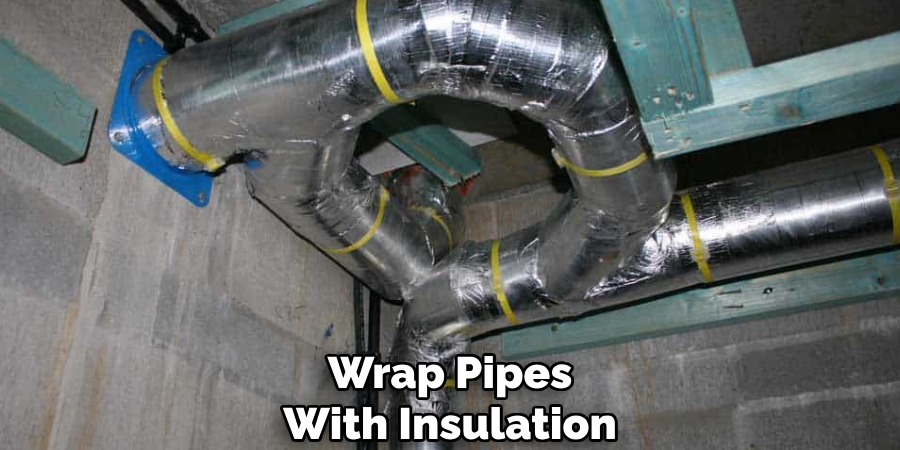
5. Replace Old, Corroded, or Rough Pipes
Older plumbing systems often have pipes made of galvanized steel or iron, which can corrode and accumulate mineral deposits over time. This corrosion creates rough pipe interiors that disrupt smooth water flow and cause turbulence, leading to vibrations. If your home has aging pipes that consistently vibrate despite other fixes, consider replacing them with modern materials like copper or cross-linked polyethylene (PEX).
These newer materials feature smooth interiors that facilitate laminar flow, reducing vibration and noise. Upgrading your pipes can be a larger investment but often provides the most permanent and reliable solution to persistent vibration problems, along with improved water quality and system durability.
6. Adjust or Replace Faulty Valves and Faucets
Faulty valves or partially closed faucets can restrict water flow, causing irregular water velocity and turbulence that result in pipe vibrations. Inspect all visible valves and faucets to ensure they are fully open and functioning correctly. Sometimes the internal components, like cartridges or washers, wear out and create uneven water flow.
Replacing these components or entire valves with new, high-quality parts can restore proper water flow dynamics and reduce vibrations. Pay special attention to frequently used appliances and areas where vibration noise seems to originate, as these are common sources of flow irregularities.
7. Use Flexible Connectors to Isolate Vibrations
Rigid pipe connections can transfer vibrations directly into the structure of your home, increasing noise and pipe movement. Installing flexible connectors, such as braided stainless steel hoses or rubber-lined hoses, between rigid pipes and appliances like washing machines, water heaters, or refrigerators can help isolate and absorb vibrations.
These connectors reduce the transmission of pipe movement to the structure and also make future maintenance easier. Flexible connectors are especially useful where pipes connect to equipment prone to causing vibration, offering both sound reduction and durability.
8. Drain and Flush the Plumbing System
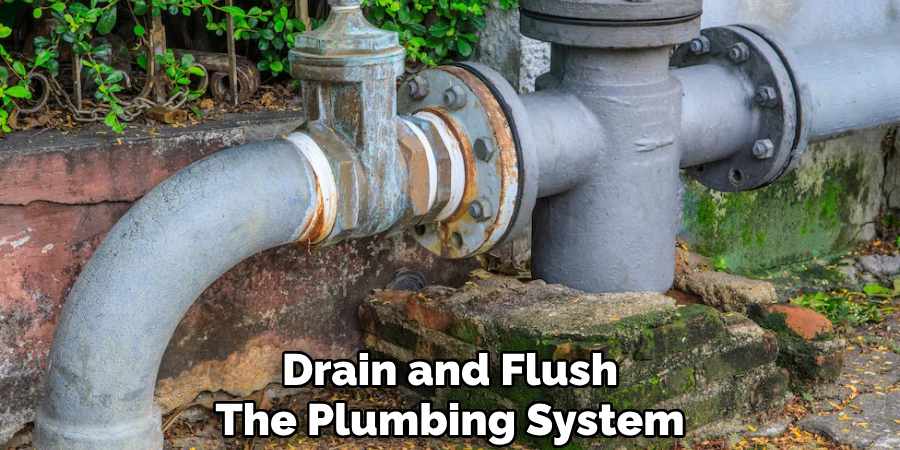
Sediment, mineral deposits, or trapped air inside pipes can cause uneven water flow, leading to vibrations. Mineral buildup narrows the internal diameter of pipes, increasing velocity and turbulence, while air pockets disrupt smooth flow, causing vibrations and noises. To resolve this, drain your plumbing system by shutting off the main water supply and opening all faucets to let water completely drain out.
Afterward, flush the system by turning the water back on and letting it run through all faucets and fixtures to clear out sediment and trapped air. Performing this maintenance regularly can help maintain clear water pathways and reduce pipe vibrations significantly.
9. Secure Pipes Inside Walls and Crawl Spaces
Pipes hidden inside walls, ceilings, or crawl spaces may vibrate and cause noise if they are not properly secured or cushioned against framing members. This hidden movement can be more difficult to diagnose but is a common cause of pipe vibration sounds that seem to echo through the house. Access these spaces through inspection panels or attic entrances and check that all pipes are fastened with clamps or straps that include rubber or foam padding.
If pipes directly touch studs or joists, insert foam insulation or pipe sleeves to prevent noise transmission. Proper securing and cushioning in concealed spaces reduce vibration and help keep your home quiet.
10. Consult a Professional Plumber for Complex Issues
If you have tried multiple methods to fix vibrating water pipes and the problem persists, it may be time to consult a licensed plumber. Some vibration problems arise from complex factors such as improperly sized pipes, faulty pressure tanks, or municipal water supply fluctuations that require specialized diagnosis and equipment.
A professional plumber can use tools like pressure gauges, flow meters, and acoustic detectors to locate the precise cause of vibrations and provide effective solutions. Professionals can also suggest upgrades such as expansion tanks, pipe rerouting, or system balancing to permanently fix vibration issues and ensure your plumbing system operates smoothly and quietly.
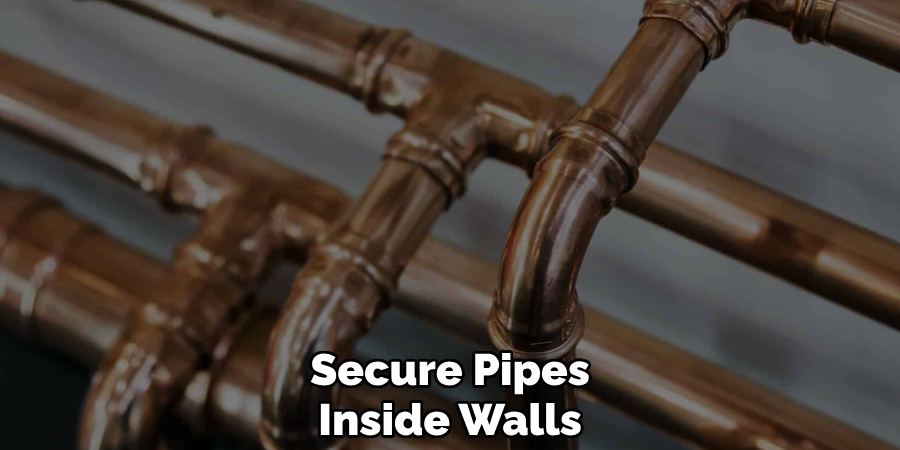
Conclusion
Fixing vibrating water pipes plumbing requires a methodical approach to identify the source and apply the appropriate remedy. Whether it’s securing loose pipes, installing water hammer arrestors, reducing water pressure, or wrapping pipes with insulation, these methods help reduce noise and prevent damage.
Replacing old pipes and faulty valves, using flexible connectors, and flushing the system also play critical roles in mitigating vibrations. For concealed pipes, ensuring proper support inside walls or crawl spaces is essential. Ultimately, for persistent or complicated issues, professional intervention ensures a precise diagnosis and a long-term fix. Thanks for reading, and we hope this has given you some inspiration on how to fix vibrating water pipes!
About the Author
Adrian Green is a passionate woodworking enthusiast who has dedicated his life to the craft of woodworking. From his early days working alongside his father in the family woodworking shop, Adrian has honed his skills and developed a deep love for creating beautiful, functional pieces with his hands. As the voice behind The Woodenify Blog, he shares his knowledge, tips, and inspiration with fellow woodworkers of all skill levels, helping them build confidence in their abilities while learning new techniques.
Professional Focus
- Specializes in DIY woodworking projects, from furniture making to home décor.
- Provides step-by-step guides, tips, and practical tutorials for woodworkers at any skill level.
- Focused on empowering readers with confidence and knowledge through easy-to-follow instructions and hands-on techniques.
- Passionate about building a community where makers can share, learn, and grow together in the world of woodworking.
Education History
University of Craft and Design – Bachelor of Fine Arts (BFA) in Woodworking and Furniture Design
Woodworking Apprenticeships – Gained extensive hands-on experience through various workshops and mentorships with seasoned craftsmen, refining carpentry and furniture-making skills.
Expertise
- DIY woodworking, carpentry, furniture making, and home décor projects.
- Creating clear, accessible tutorials and guides for beginner to advanced woodworkers.
- Helping readers experience the satisfaction and fulfillment of turning raw materials into stunning finished products.
